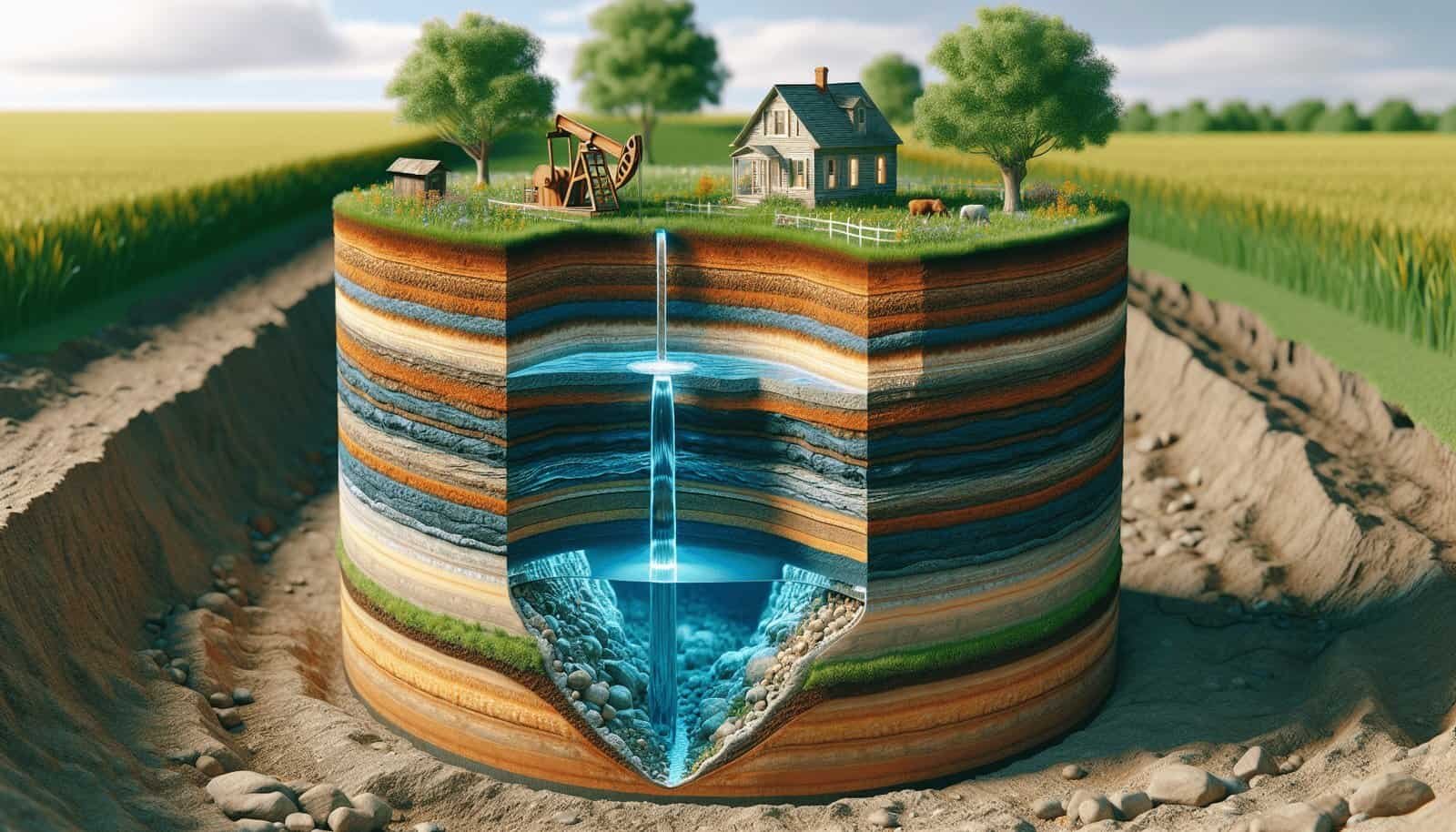Have you ever wondered about the quality of the well water you use in your daily life? Whether you live in a rural area or simply rely on well water for your household, understanding well water quality is crucial for your health and peace of mind. Let’s take a friendly and informative journey through the characteristics of well water quality, why it matters, and how you can ensure your water is safe to drink.

Understanding Well Water Quality
The quality of well water can vary greatly depending on several factors, including geographic location, surrounding land use, and the condition of the well itself. Well water can be a good source of clean water, but it can also be susceptible to contamination from natural and man-made sources. It’s important for you to regularly test and monitor your well water to ensure its safety.
Factors Affecting Well Water Quality
Well water quality can be influenced by numerous factors, from natural sources to human activities. It’s crucial to understand these influencers so you can better protect your water source.
Natural Factors
Natural factors like mineral content, soil type, and geological formations impact well water quality. Minerals such as calcium and magnesium are common, and while they can add a pleasant taste, they can also cause hard water, which might lead to scale buildup in your plumbing.
Another concern is iron and manganese, which can cause staining on clothes and fixtures. Although they aren’t harmful to your health, they can be a nuisance. Additionally, naturally occurring microorganisms can exist in well water, but they are seldom in harmful concentrations unless disturbed by environmental changes or other factors.
Human Influence
Human activities significantly impact well water quality. Agricultural runoff can introduce pesticides and nitrates into the groundwater. Industrial activities might contribute contaminants like heavy metals and chemicals if not properly managed. Septic systems can leak, introducing bacteria and nitrates into your water supply if they are too close to your well.
Common Contaminants in Well Water
Knowing the common contaminants in well water helps you address potential issues effectively. Here’s a closer look at what you might find and their implications.
Microorganisms: Bacteria, viruses, and parasites can infiltrate water supplies and cause illnesses. Testing for coliform bacteria, including E. coli, is essential for indicating water quality.
Nitrates and Nitrites: Often originating from fertilizers, manure, or septic systems, these can cause health issues, particularly in infants, by interfering with the blood’s ability to carry oxygen.
Heavy Metals: Arsenic, lead, and mercury can seep into well water from natural deposits or industrial pollution and pose serious health risks.
Volatile Organic Compounds (VOCs): These include chemicals like benzene and toluene, which can enter water supplies from industrial activities and improper waste disposal.
Minerals: While not all minerals are harmful, high levels of certain minerals like fluoride can be problematic. Fluoride, for instance, can be beneficial in small amounts but harmful in excess.
Health Implications of Contaminated Well Water
Your health can be significantly affected by the quality of your well water. Consuming contaminated water can lead to illnesses, some minor and others more serious. Bacterial contamination can cause gastrointestinal illnesses, while prolonged exposure to heavy metals or VOCs can lead to chronic health conditions such as neurological disorders or cancer.
To protect yourself and your family, it’s vital to understand what’s in your water and whether any contaminants exceed safe levels. Regular testing is a key preventative measure to help you manage this risk.
Testing and Monitoring Well Water Quality
Testing your well water is an essential part of ensuring its quality. But what does testing involve, and how often should you do it?
When and How Often to Test
It’s generally recommended that you test your well water at least once a year. However, you might need to conduct more frequent testing if:
- There are known problems with well water in your area.
- The well is located in an area with extensive agricultural or industrial activities.
- You notice a change in the taste, smell, or appearance of your water.
Types of Tests
Here’s an overview of common tests you might consider for your well water:
Basic Water Quality Indicators: pH, Total Dissolved Solids (TDS), and hardness levels can indicate overall water quality.
Microbiological Tests: Testing for coliform bacteria and E. coli is crucial to ensure that your water is free from harmful microorganisms.
Chemical Tests: These include tests for nitrates, heavy metals (like lead and arsenic), and VOCs.
Radon and Radiation: In areas with high natural radiation levels, testing for radon and other radioactive substances might be necessary.
Choosing a Laboratory
You might wonder how to choose the right laboratory for testing your well water. It’s important to select a certified and reputable lab to ensure accurate results.
When choosing a lab, consider the following:
Accreditations: Ensure the lab is accredited by relevant environmental or water quality organizations.
Expertise: Look for a lab with experience in testing well water, as they will be more familiar with common contaminants and testing methodologies.
Comprehensive Testing: The lab should offer a range of tests that cover both potential biological and chemical contaminants.
To assist you, here’s a quick comparison in table format:
| Criteria | Description |
|---|---|
| Accreditations | Certified by recognized water quality bodies |
| Expertise | Experience with well water testing |
| Comprehensive Testing | Offers diverse range of relevant tests |

Improving Your Well Water Quality
Once you’ve tested your well water and understand its quality, you might need to take steps to improve it. Here’s how you can address common issues effectively.
Water Treatment Options
Several treatment options can help improve the quality of your well water, depending on what contaminants are present.
Filtration
Filtration can help you remove sediment, dirt, and some pollutants from your water. Various types of filters target different contaminants, such as activated carbon filters for organic compounds or reverse osmosis systems for a broad range of chemicals and heavy metals.
Disinfection
For microbiological contamination, disinfection is necessary. Chlorination, UV light treatment, or ozonation can effectively kill bacteria, viruses, and parasites.
Water Softening
If hard water is a concern, a water softener can help by exchanging calcium and magnesium ions with sodium or potassium ions, reducing scale buildup in pipes and appliances.
Preventative Measures
Besides treatment, you can take preventative measures to protect your well from contamination.
Regular Well Maintenance
Regularly inspect your well cap, casing, and the area around your well to ensure there are no structural issues or contamination sources nearby. Seal any cracks and keep the area clean and free of debris.
Mind The Surrounding Land Use
Be mindful of how land around your well is used. Ensure septic systems are placed a safe distance away and manage runoff from agricultural or industrial activities to reduce contamination risk.
Educate Your Household
Educating everyone in your household about well water quality and encouraging practices that protect your water supply is beneficial. Simple actions like proper disposal of chemicals and mindful use of fertilizers can make a big difference.

Conclusion
Understanding and maintaining your well water quality involves regular testing, addressing identified contaminants, and taking preventative measures to protect your water source. By keeping your water’s quality in check, you can enjoy peace of mind knowing that your drinking water is safe for you and your family.
Ensuring the safety of your well water is an ongoing process that requires diligence and attention, but the benefits certainly outweigh the efforts. With the right knowledge and resources, you can confidently manage your well water quality and ensure a healthy and safe water supply for your home.


